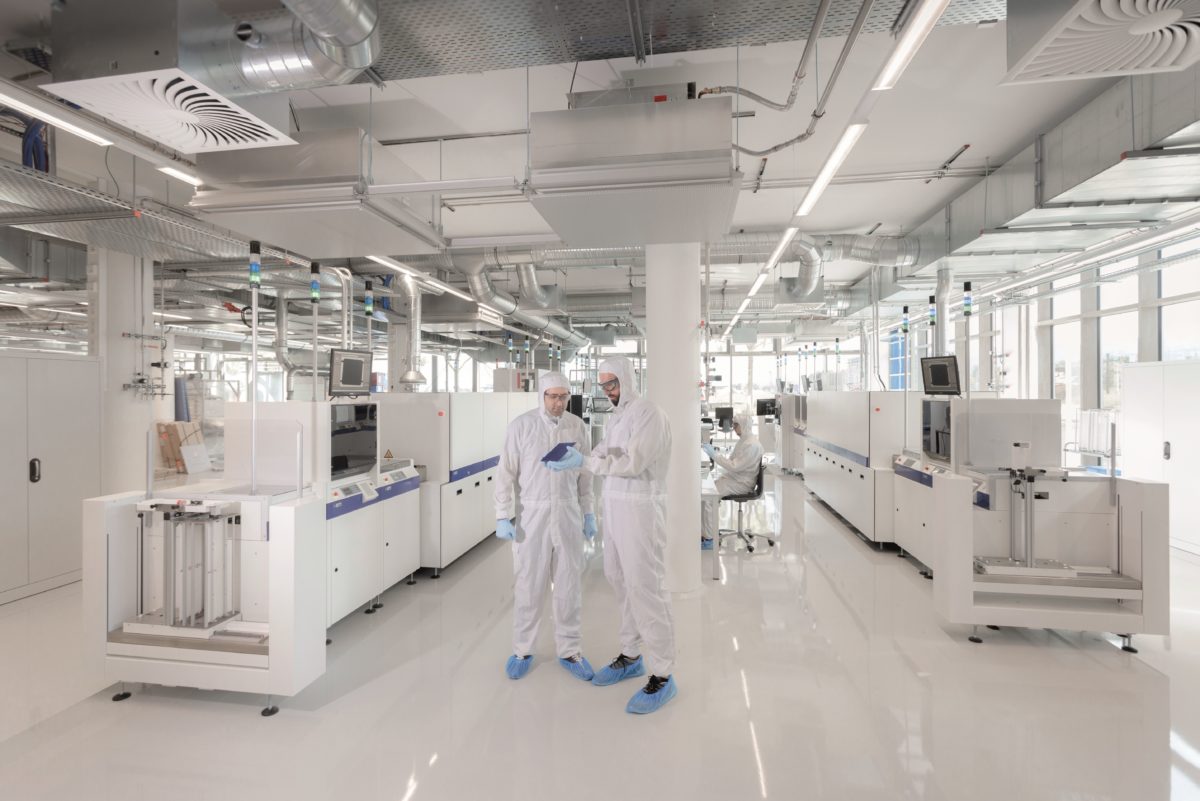Researchers at Germany's Fraunhofer ISE have developed a silicon heterojunction (SHJ) solar cell utilizing intense pulsed light-processed screen-printed metal contacts, and claim to have achieved a conversion efficiency of 23.0% with this approach.
Instead of commonly utilized thermal annealing, the scientists used intense pulsed light (IPL) processing, which is a less expensive roll-to-roll technique for rapid thermal processing of various thin films. It is generally used for sintering silver-, copper-, or nickel-based electrodes of printed electronics and, in PV research, for sintering copper-based electrodes on silicon wafers and on metal-compound-based heterojunction structures.
The group explained that IPL mostly consists of visible light, delivered in millisecond-lasting pulsed electromagnetic radiation for rapid heating of the cell’s low-temperature metal contacts. “On average, IPL-annealed SHJ cells outperform their thermally treated pendants by 0.3–0.4%abs, in particular due to higher open-circuit voltages and fill factors,” the group specified, adding that thermal annealing requires the use of bigger and more cost-intensive manufacturing tools.
IPL, however, is restricted by the temperature constraints of the sensitive amorphous silicon heterojunction structure. A more practical application for the technology, according to the researchers, are more temperature-tolerant poly-Si-based tunnel oxide passivating contacts, which they applied on both sides of the wafer.
The contacts were coated with indium tin oxide (ITO) through DC magnetron sputtering, which is a vacuum coating technique commonly used for the deposition of many types of material in cell production and elsewhere. The radiative energy of the IPL processing,according to Fraunhofer ISE, is not only absorbed by the wafer, but also by the metallization itself. “This amount of energy absorbed by the metal contacts induces a significant finger resistance reduction,” it stated, noting that this reduction also results in an increase of the contacts’ lateral conductivity. Moreover, contact resistivities at the metal electrode/ITO contact well below 10 mW·cm² were achieved.
Popular content
“Full-size IPL-processed busbarless SHJ cells are fabricated exhibiting an independently certified efficiency of up to 23.0%,” the researchers affirmed, adding that conversion efficiency of the cell was certified by Fraunhofer ISE CalLab.
Moreover, the IPL technique was also applied to screen-printed 2 cm x 2 cm-sized solar cells with TOPCon contacts on both sides and open-circuit voltage values of up to 709.3 mV were achieved.
“According to the International Technology Roadmap for Photovoltaic, silicon heterojunction technology is already growing into mass production,” research first author, Jörg Schube, told pv magazine. “In fact, it is expected to gain a market share of more than 10% within the next five years.” He further explained that optimized industrial annealing processes using IPL could further pave the way for success.
The IPL processing was described in the paper Intense pulsed light in back end processing of solar cells with passivating contacts based on amorphous or polycrystalline silicon layers, published in Solar Energy Materials and Solar Cells.
This content is protected by copyright and may not be reused. If you want to cooperate with us and would like to reuse some of our content, please contact: editors@pv-magazine.com.



By submitting this form you agree to pv magazine using your data for the purposes of publishing your comment.
Your personal data will only be disclosed or otherwise transmitted to third parties for the purposes of spam filtering or if this is necessary for technical maintenance of the website. Any other transfer to third parties will not take place unless this is justified on the basis of applicable data protection regulations or if pv magazine is legally obliged to do so.
You may revoke this consent at any time with effect for the future, in which case your personal data will be deleted immediately. Otherwise, your data will be deleted if pv magazine has processed your request or the purpose of data storage is fulfilled.
Further information on data privacy can be found in our Data Protection Policy.